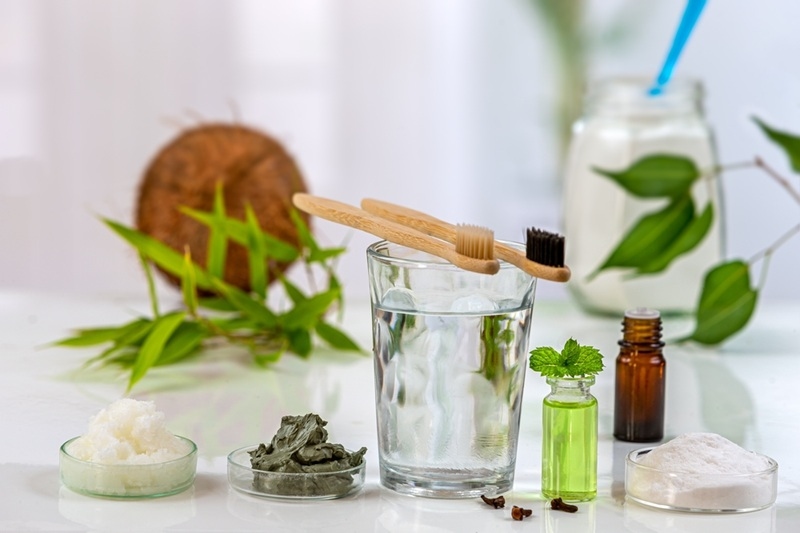
When you grab your toothbrush and squirt a pea-sized dose of toothpaste onto the bristles, have you ever questioned what is actually inside the tube? Brushing itself is a simple enough thing, but it is the mixture of chemistry and prudence that makes the toothpaste effective. Learning about what toothpaste is composed of can help you make informed choices when it comes to dental care products so that your morning and night teeth brushing routine is not only efficient but safe as well.
Toothpaste ingredients are the substances blended together to form the end product that cleans, guards, and sometimes brightens your teeth. Every ingredient plays a special role, from fighting cavities to leaving your mouth smelling clean.
Though different brands and types have varying arrangements, most toothpastes contain some mix of abrasives, fluoride, humectants, binders, detergents, flavoring agents, and, in some instances, specialty ingredients like whitening agents or desensitizers.
In short, toothpaste is more than just a minty paste - it’s a carefully designed dental product that relies on both traditional paste components and modern science.
Let’s break down the common paste components and chemical ingredients you’ll find on most toothpaste ingredient lists:
Abrasives are the backbone of all toothpaste. They are powdery, gritty substances that work by mechanically removing food particles, plaque, and stains from your teeth without touching the enamel. Some examples of abrasives include:
The ability of a toothpaste to clean depends largely on these paste chemicals. The level of abrasiveness is measured in terms of Relative Dentin Abrasivity (RDA), and most available toothpastes have a safe level that will not harm your teeth even when used daily.
Fluoride is one of the most critical ingredients of toothpaste in the prevention of tooth decay.
The addition of fluoride to a toothpaste composition has decades of scientific support. Adult and child tooth brushing using fluoride toothpaste is an easy but very effective method of oral health maintenance.
Humectants keep toothpaste moist and give it that silky, spreadable texture. Some of the most common humectants are:
These non-offending chemicals keep your toothpaste new from the initial squeeze to the last. They also allow the other ingredients to mix well with each other, with the formula being consistent for the toothpaste.
Binders, or thickeners, hold the toothpaste together and keep the contents from separating. Without them, your paste would be liquid or lumpy. Some of the most used binders are:
A proper blend of these paste ingredients produces a smooth texture for effective and comfortable brushing.
Toothpaste detergents produce foam, which disperses the paste all over your teeth and gums. Sodium lauryl sulfate (SLS) is used most often.
While occasionally blamed for mouth irritation in sensitive mouths, SLS is otherwise a safe and effective chemical component in toothpaste. Some special toothpastes use SLS-free ingredients for the sensitive.
Fruit, mint, or herb flavors in toothpaste not only are pleasing to use but also encourage proper oral hygiene. Among the most popular flavoring paste ingredients are:
All these non-harmful ingredients cover up the flavor of other chemical substances without damaging your teeth, so brushing is comfortable for children as well as adults.
Whitening toothpastes primarily contain special ingredients that are designed to bleach stains and whiten your teeth. Some of the typical whitening ingredients include:
They are accurately measured to provide effectiveness without excessive abrasion of the enamel. Desensitizing safe ingredients in whitening paste ingredients are usually combined with mild abrasives to provide a good balance of the toothpaste formula.
If you are teeth sensitive, you need to use toothpastes that have desensitizing safe ingredients like strontium chloride or potassium nitrate. The ingredients will decrease sensitivity to heat, cold, or sweetness by soothing the nerve endings of the teeth.
Preservatives maintain toothpaste's freshness for longer, and dyes provide the paste with a cosmetic appeal. Chemical additives are not required for cleaning, but they maintain the product's functional and aesthetically pleasing appearance for its entire lifespan.

Understanding what to look for on your tube of toothpaste can help inform you about picking a product that is right for you:
The ingredients in toothpaste are usually given in order of decreasing concentration, so the first few are of greatest significance.
All dental chemical ingredients of toothpaste in most toothpastes are safe to use every day, provided they are used as directed. Governments like the FDA regulate and limit the safe oral product ingredients present in American products. Even highly specialized additives such as whitening or desensitizing ingredients are thoroughly tested prior to use in toothpaste products.
Just remember to:
There are a few myths about toothpaste ingredients:
Understanding what each toothpaste ingredient does helps differentiate from the dental value reported by advertising:
By identifying the paste ingredients and chemistry of the material in the products, you can choose a toothpaste that will be appropriate for your dental requirements. The wonder of toothpaste is that all the ingredients collaborate.
Abrasives hone, fluoride strengthens enamel, humectants preserve texture, detergents distribute the paste, flavor makes it taste good, and additives take care of individual requirements like sensitivity or stains. All of them combined in harmony lead to a symphonic toothpaste preparation that makes your morning and evening brushing effective and pleasurable.
Next time you squeeze toothpaste onto your toothbrush, remember that each usage requires a carefully weighted combination of toothpaste chemicals working together to clean, protect, and maintain your teeth.
Whether cavity protection, tartar protection, whitening, or sensitivity protection is on your shopping list, understanding what's in your toothpaste makes your morning and evening routine pass the test of science and safety. In fact, a scientifically formulated toothpaste is more than a twice-a-day habit - it's the secret to a lifetime of healthy smiles.
This content was created by AI